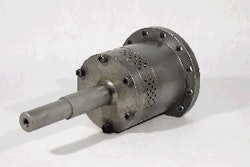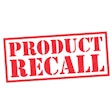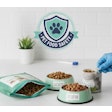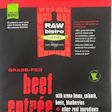"The best way to get a good idea is to get a lot of ideas," according to Linus Pauling, Nobel Prize-winning chemist. First, decide what you want to happen, and why. Then it is time for brainstorming. Many techniques can be used to facilitate brainstorming and creative thinking, notes author David Allen (Getting Things Done, 2001), but the basic principles are:
- Do not judge, challenge, evaluate or criticize.
- Go for quantity, not quality.
- Put analysis and organization in the background.
In other words, give yourself permission to capture any idea, and then later on, figure out how it fits in and what to do with it.
This month, my dispatch comes from ideas gathered from people I've talked with and things I've seen and thought about recently. Could be that some of them are worthwhile for you.
Marketing nuggets
The day of the traditional petfood kibble will soon be gone. More and more petfood kibbles will have pleasing colors, shapes, aromas and textures, intended to appeal to pet owners.
For the foreseeable future, anthropomorphism will continue to shape the petfood industry.
The pet treat market is undergoing a huge transformation from novelty products to functional products.
There's a 6-to-18 month lag time between the introduction of human food ideas and their transfer to pet treats.
Sustainable Packaging Coalition
The Sustainable Packaging Coalition is an industry working group. Its aim is to foster innovative, functional packaging materials that promote economic and environmental health through supply chain collaboration. According to Paul Comey, a speaker at the recent Pet Food Institute (US) annual meeting, sustainable packaging:
- Meets market criteria for performance and cost;
- Is sourced, manufactured, transported and recycled using renewable energy;
- Maximizes the use of renewable or recycled source materials;
- Is beneficial, safe and healthy for individuals and communities throughout its life cycle;
- Is manufactured using clean production technologies and best practices;
- Is physically designed to optimize materials and energy; and
- Is effectively recovered and utilized.
That's what I call a tall order.
A related news item: Wal-Mart Stores Inc. recently announced plans to continue its commitment to reducing packaging across its global supply chain by 5% by 2013. Wal-Mart is beginning to use a packaging scorecard. In the near future, suppliers will receive an overall score relative to other suppliers, as well as relative scores in each category. On February 1, 2007, Wal-Mart will share the scorecard with its global supply chain of more than 60,000 suppliers. As of February 1, 2008, Wal-Mart will begin using the scorecard to measure its entire supply chain.
PFI's 50th anniversary
In 2007, the Pet Food Institute (US) will turn 50 years old. We are working on a timeline that will summarize the highlights and milestones in the history of the petfood industry over those 50 years. Please think about any historical information or graphics you might contribute to this project. If you have ideas, please contact me.
















